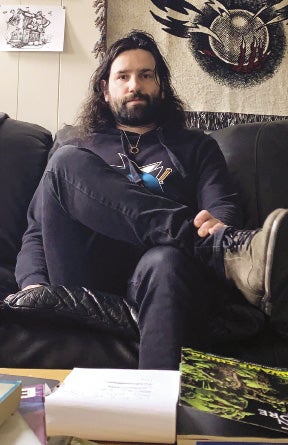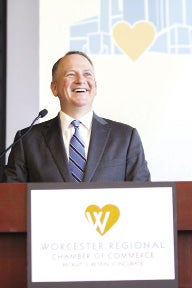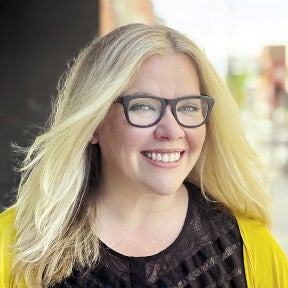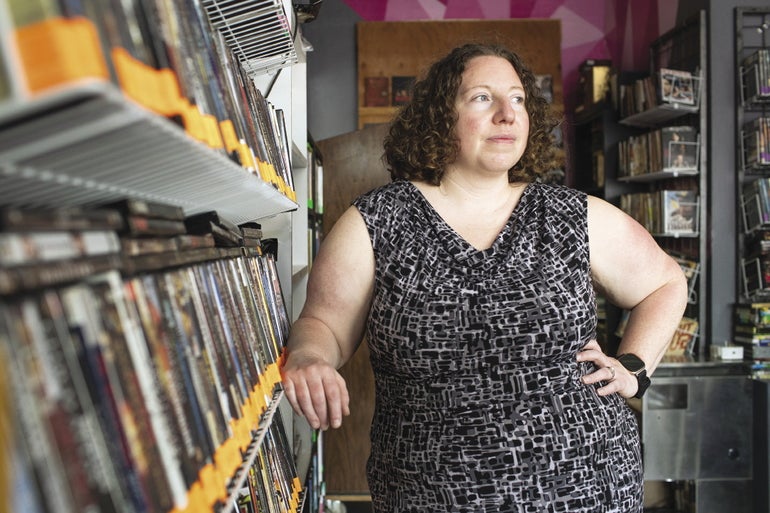Amid the Worcester Telegram & Gazette’s decline in coverage and size, smaller publications have tried to fill the gap in Central Massachusetts’ journalism. But they’ve all run into the same problem: Making a profit as a media organization is not easy.
Get Instant Access to This Article
Subscribe to Worcester Business Journal and get immediate access to all of our subscriber-only content and much more.
- Critical Central Massachusetts business news updated daily.
- Immediate access to all subscriber-only content on our website.
- Bi-weekly print or digital editions of our award-winning publication.
- Special bonus issues like the WBJ Book of Lists.
- Exclusive ticket prize draws for our in-person events.
Click here to purchase a paywall bypass link for this article.
Amid the Worcester Telegram & Gazette’s decline in coverage and size, smaller publications have tried to fill the gap in Central Massachusetts’ journalism. But they’ve all run into the same problem: Making a profit as a media organization is not easy.
While some like Spectrum News 1, the cable news outlet of Charter Communications operating out of Worcester, are remaining stable or even growing, others, like the Worcester Phoenix and Worcester Sun, have since shut down.
“It’s just like everybody has declined," said former T&G executive editor Dave Nordman, who spent 20 years at the region’s paper of record. He mentioned the decline in local coverage at radio station WTAG, the consolidation of Worcester Magazine into the T&G, and the loss of three MassLive reporters in the past two years.
Efforts to make up for the T&G’s shrinking newsroom have been thwarted by the challenge of profitability. For the short-lived Worcester Sun, it was a matter of audience interest and insufficient subscriptions that caused the paper to fold, said former T&G reporter Mark Henderson, who founded the Worcester Sun. For the Phoenix, which stopped covering Worcester in 2000, it was primarily a lack of local advertising support.
About 1,500 alternative media organizations (those not considered their community’s paper of record) operate throughout the United States, according to Northwestern University's 2023 report on the state of news. But it’s not easy to make the business model work: the number of new local media startups established since 2018 is equal to the number folded in that same period.
Amid this reckoning, new media business models are emerging, testing different streams of revenue, as well as the traditional frameworks of journalistic standards that have historically defined coverage at institutions like the T&G. These include donation-based nonprofits and open-bias blogs, which bring questions about the objectivity and quality of the news in a new era of journalism.
New media models
Among the media outlets launched over the past decade, one of the fastest-growing is Bill Shaner’s Substack blog Worcester Sucks and I Love It. Shaner, who left his job as a Worcester Magazine reporter in 2020 amid its consolidation, has increased his readership three-fold over the past three years, which includes nearly 700 paid subscribers, according to audience data he shared.
Shaner’s blog takes a definitive step away from the way newspapers have traditionally operated. It relies on Shaner’s robust social media following and commitment to accountability journalism, with an open bias and casual tone to allure paid subscribers without having to rely on advertising. He sees his role as providing a level of in-depth journalism missing in the Worcester media landscape.

“The people left [at the T&G] are scrambling to fill pages or meet social media quotas," Shaner said when he started his blog in 2020. "They’re doing the work of two or three people, at least, and they have no time to substantively dig into issues. What we’re left with is, at best, middling surface coverage of issues that deserve serious interrogation."
Audiences’ consumption of news has shifted toward online news sources. In the past five years, the T&G’s digital-only subscriptions rose from half of its subscription base to 72% in 2023, according to Brittany Prendiville, who manages advertising sales at the T&G.
This shift has helped individual journalists, like Shaner, form solid audiences through their social media platforms. Others who have grown a substantial following in the region include Talk of the Commonwealth radio host Hank Stolz, Manny Alvarado of Manny Jae Media, and Jennifer Julien Gaskin and Giselle Rivera-Flores of Don’t Touch My Podcast.
The proliferation of individual-run media has brought about criticism, though. Some, like Shaner’s, have received criticism for melding opinion with journalism.

“You’ve got elements of social media and opinion-oriented journalism with a certain ideological perspective that kind of fills the void,” Timothy Murray, Worcester Regional Chamber of Commerce president and CEO, said in a September episode of CommonWealth Beacon’s podcast Codcast. “It certainly does not always present both sides of an argument. We think it’s important to get that information that tells both sides of the story.”
Murray and the chamber are behind another movement within Central Massachusetts media: the expansion of nonprofit news organizations.
Nonprofit news
The chamber began researching the gap in local news coverage in 2022 after receiving feedback and concerns from business and community leaders about the state of media in the region, chamber spokesperson Caitlin Lubelczyk said.
As a result of the research, the chamber board approved the launch of a nonprofit news site in July. The Worcester Guardian launched officially in September, following a growing nationwide trend of nonprofit news organizations.

Now, the Guardian, which offers free access to its content, has published more than 530 stories and has about 7,114 subscribers to its mailing list, according to Tim Loew, the chair of the Guardian’s board of directors.
Instead of relying on subscriptions or advertising for revenue, the Guardian is funded by donations from the chamber and other sponsors including Worcester insurer Fallon Health, Worcester State University, and Whitinsville-based UniBank. More than half of the funding comes from the chamber, Loew said.
That money has gone to cover payments to its eight freelance writers, as well as the salary for Charlene Aresenault, the nonprofit’s full-time editor, Loew said. The Guardian received its 501(c)(3) status in January after applying in December.
Guardian hiccups
The Guardian’s launch by the Worcester chamber and its reliance on that organization for funding has created concerns about its own bias in the types of stories it covers, as well about coverage potentially being slanted to favor the powerful people at and around the chamber. Critics say a publication started and supported by city leadership creates an inherent conflict of interest.
“When the organization is started by a chamber, which represents businesses, the chances of getting arm's length coverage on powerful institutions that are represented on the chamber is not very good,” said Walter Robinson, editor-at-large at the Boston Globe, who has started two nonprofit news sites in Massachusetts

Cara Berg Powers, a media professor at Clark University who was a nonprofit director for 12 years, pointed to aspects of the Guardian’s launch in September, which included what she called messy hiccups. These problems included stating it was a 501(c)(3) on its website before receiving certification, listing then chamber vice president Alex Guardiola as the president, treasurer, clerk, and director of the Guardian in its first business entity filing, and copying-and-pasting the majority of the Guardian’s original “About” page from another nonprofit news site, the New Bedford Light.
“I can't remember exactly what the kerfuffle was about, but it was nothing on the news side of things,” Loew said of the plagiarized “About” page, which included statements on the Guardian’s mission, values, and funding transparency. “Could we have spent a little bit more time making sure that they were different? I guess, but it's a basic page most organizations have on their websites.”
Since its earliest months, all three of those issues highlighted by Berg Powers have been fixed, with its 501(c)(3) certification completed, its board of directors members now listed as the leaders in the Guardian’s business entity filing, and its former “About” page replaced with a white paper.
While the Guardian has made strides in establishing itself as an independent operation, chamber CEO Murray maintains a seat on the board, which gives at least the appearance of influence over editorial direction.

Nonprofit pitfalls
Because nonprofit news relies on donors, concerns about conflicts of interest arise for their business models. The Institute of Nonprofit News offers standards for editorial quality, financial transparency, and operational independence to help nonprofit publications function ethically.
The Guardian submitted its application for INN membership in 2023 and has not yet been approved, Loew said.
The INN rejected about half the membership applications it received in 2023 for not meeting the organization’s standards for editorial quality, financial transparency, and operational independence, according to INN’s Chief Network Officer Jonathan Kealing.
The number of nonprofit news organizations across the country has doubled over the past six years, according to INN. In Massachusetts alone, 21 nonprofit outlets have INN membership.
Berg Powers and Shaner are attempting to get into the nonprofit news sector, as well. The two launched the Worcester Community Media Foundation as a 501(c)(3) in the fall, which is based at Rewind Video in Worcester, which is also run by Powers, Shaner, and a handful of others. WCMF provides mentorship and fellowship programs to local journalists.
The ultimate goal is to launch new publications for the region, Berg Powers said.
“The goal [of WCMF] is … certainly responding to some of the same needs that the Guardian’s press releases have identified as part of national trends of reducing local ownership of local media,” said Berg Powers.
The increase in non-traditional media models has provided a new model for individuals who want to start news outlets relying on social media followings instead of advertising. For Dan Kennedy, journalism professor at Northeastern University in Boston, this means more news outlets launching, even if many of them won’t last long.
“The future, I believe, will bring more devastation at the hands of corporate-chain newspapers as well as more locally owned startups,” said Kennedy. “Things may get worse before they get better, but at some point I hope there will be a tipping point at which new projects begin to outnumber chain newspapers that are shut down or hollowed out.”
CORRECTION: The chart associated with this article incorrectly stated that the Leominster Champion is published weekly in print. The Champion is an online-only publication. The chart also omitted Berlin, Sterling, and West Boylston from the list of municipalities that are covered by The Clinton Item.

